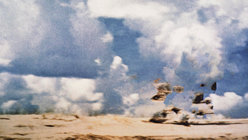Welcome to Help Desk, where I answer your queries about making, exhibiting, finding, marketing, buying, selling — or any other activity related to — contemporary art. Together, we’ll sort through some of art’s thornier issues. Email helpdesk@dailyserving.com with your questions. All submissions remain strictly anonymous and become the property of Daily Serving.
I may be in an enviable position, but it is a sticky one nonetheless. I’m getting to the position where I may be represented by multiple galleries who want to show my work at art fairs. With the rise of the art fair as a way of selling and promoting artists, how might I go about deciding which gallery will show my work at a fair? In the instance where you are just showing in galleries it seems easy because you can schedule shows apart in the calendar year and set work aside for each gallery, but if the same galleries start showing up at fairs, it gets tricky. Is this something I have to negotiate or would I just tell them to talk it out?
Congratulations! To answer your query, I turned to some experts who have the inside scoop on art fairs. Gallerist Nathan Bowser in Portland, Oregon agrees that your predicament (if it can really be called such) is a good one to have. “This artist has a very exciting problem and should be commended for actively thinking about the best way to balance these many positive elements of his or her career. Communication is key to any business relationship, so avoid the ‘let the galleries duke it out’ approach (this is a great way to alienate your allies). This is YOUR career, so it is quite important that you remain an active voice in these important choices. How and where your art is displayed directly affects who sees it and what they take away from that experience. Though it may be one of the least interesting aspects of an artist’s work, staying involved in your career planning can be one of the biggest determining factors of your success.”
Edward Winkleman, my other go-to man on the art fair scene, had some detailed insight into how your issue might play out. As the Director of Winkleman Gallery in New York, he’s had a lot of experience with fairs, including ARCO, Art Chicago, Pulse, Year 06, Aqua, and NADA: “It’s not at all unusual for an artist to have work in the booths of multiple galleries at an art fair. Usually those galleries are in different cities, so there’s not much confusion about who represents them where, but you’ll occasionally also find work by the same artist in booths of galleries from the same city (generally as a plan worked out mutually by artist and respective galleries, but not always). For example, say Gallery A represents Artist X and Gallery B owns some of Artist X’s work outright. Even if Gallery A and Gallery B are in the same city (and even if Artist X and Gallery A might object), Gallery B can indeed present the work at the art fair of their choice because it’s their property. Of course they might damage their relationship with Artist X (assuming they still have one), but they are in the business of selling art, so…”




